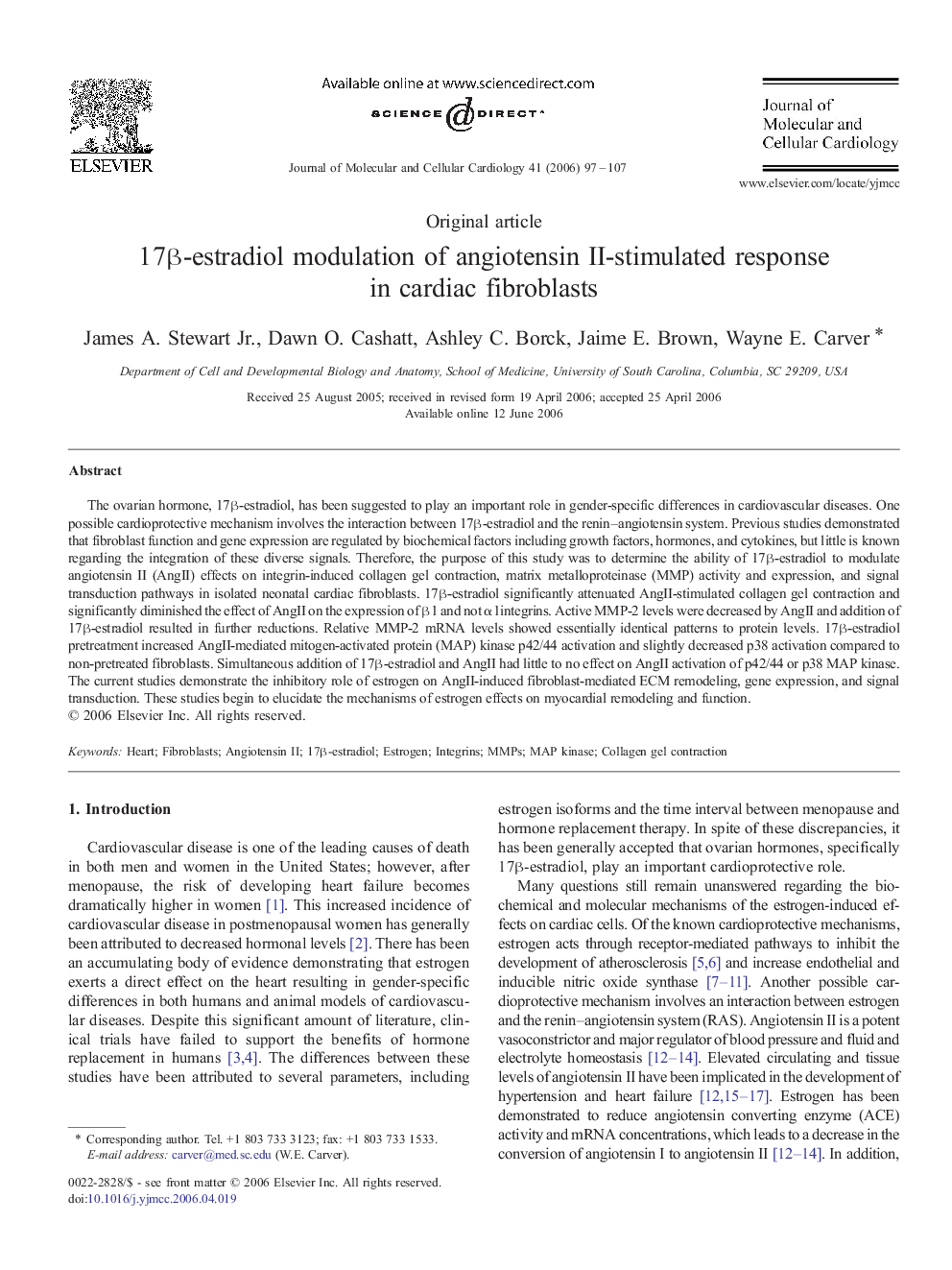| Article ID | Journal | Published Year | Pages | File Type |
|---|---|---|---|---|
| 2192457 | Journal of Molecular and Cellular Cardiology | 2006 | 11 Pages |
The ovarian hormone, 17β-estradiol, has been suggested to play an important role in gender-specific differences in cardiovascular diseases. One possible cardioprotective mechanism involves the interaction between 17β-estradiol and the renin–angiotensin system. Previous studies demonstrated that fibroblast function and gene expression are regulated by biochemical factors including growth factors, hormones, and cytokines, but little is known regarding the integration of these diverse signals. Therefore, the purpose of this study was to determine the ability of 17β-estradiol to modulate angiotensin II (AngII) effects on integrin-induced collagen gel contraction, matrix metalloproteinase (MMP) activity and expression, and signal transduction pathways in isolated neonatal cardiac fibroblasts. 17β-estradiol significantly attenuated AngII-stimulated collagen gel contraction and significantly diminished the effect of AngII on the expression of β1 and not α1integrins. Active MMP-2 levels were decreased by AngII and addition of 17β-estradiol resulted in further reductions. Relative MMP-2 mRNA levels showed essentially identical patterns to protein levels. 17β-estradiol pretreatment increased AngII-mediated mitogen-activated protein (MAP) kinase p42/44 activation and slightly decreased p38 activation compared to non-pretreated fibroblasts. Simultaneous addition of 17β-estradiol and AngII had little to no effect on AngII activation of p42/44 or p38 MAP kinase. The current studies demonstrate the inhibitory role of estrogen on AngII-induced fibroblast-mediated ECM remodeling, gene expression, and signal transduction. These studies begin to elucidate the mechanisms of estrogen effects on myocardial remodeling and function.
